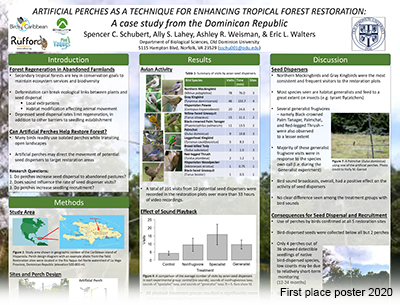ORCID
0000-0003-4052-5023 (Wilson)
College
Darden College of Education and Professional Studies
Program
Ph.D. Applied Kinesiology -- Human Movement Sciences
Publication Date
Spring 2020
DOI
10.25883/128s-9c12
Abstract
Clinicians are focused on ways to preserve function, independence, and quality of life in the aging adult population. Heart disease is the leading cause of death in the U.S.[1]. Thus, assessing the extent of this disease is a high priority in preserving health throughout the lifespan. When determining risk of cardiovascular (CV) disease, functional assessments are recognized as a way to embed function-focused care into assessing disease risk [2]. Ankle-brachial pressure index (ABPI) is a non-invasive reliable predictor for identifying cardiovascular disease risk and mortality [3]. Thus, the purpose was to evaluate the association between functional assessments and ankle brachial pressure index in an aged population. Data was collected from the 1999-2002 National Health and Nutrition Examination Survey, which included 1696 adults (age 40-70 years). Measurements evaluated were functional assessments of a vestibular balance test and a timed 20ft walking test, and laboratory measurements of right and left leg ABPI score. Results found poor balance associated with higher odds of being in a high-risk ABPI category when looking at both left ABPI (odds ratio [OR] = 1.70; 95%CI: 0.58, 5.0) and right ABPI (OR = 2.37; 95%CI: 0.76, 7.33). Slower timed walk scores were associated with increased odds of being in the high-risk ABPI category for the left (OR = 3.21; 95%CI: 1.73, 5.98) and right (OR = 3.44; 95%CI: 2.13, 5.58). When combined, those with poor balance and slower walking speed are at higher odds for being in the high-risk ABPI category for the left (OR = 1.97; 95% 0.80, 4.85) and right (OR = 2.55; 95% 1.23, 5.79). We conclude, functional assessments are associated with a commonly used measure of CV disease risk, ABPI. Specifically, functional assessments of balance and walking speed are suggestive of risk category of ABPI, which indicates risk category for CV disease [4].
Keywords
Aging adults, Ankle-brachial pressure index (ABPI), Cardiovascular disease risk, Balance test, Walking test
Disciplines
Exercise Physiology | Exercise Science
Files
Download Full Text (359 KB)
Recommended Citation
Twiddy, Hannah M.; Wilson, Patrick B.; and Reynolds, Leyrn, "Evaluation of Balance and a Timed Walk on Ankle Brachial Pressure Index and Potential Blood Measures of Cardiovascular Health" (2020). College of Education & Professional Studies (Darden) Posters. 4.
https://digitalcommons.odu.edu/gradposters2020_education/4



